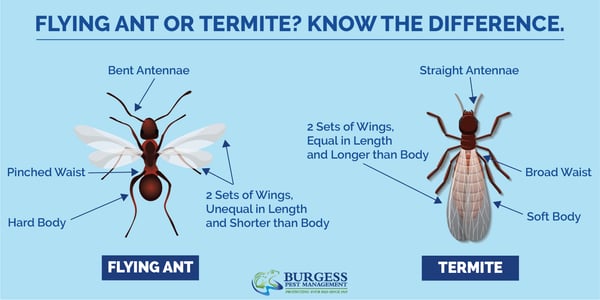Termite swarm season is coming in Massachusetts.
In my years working in pest management, I've found that one of my first signs of spring is the classic "I'm not sure if I have termites or ants" phone call. Surprise-- We've already had a call about live termite activity this year! When in doubt, you should always consult a professional to identify termites in your Massachusetts home, but it doesn't hurt to know the basics.

Body: Ants have distinct body parts with a “pinched” waist while termites have more uniformly shaped bodies with broad waists. The body of an ant is harder than that of a termite.
Antennae: Termite antennae are straight. Ant antennae are bent, or “elbowed”.
Wings: This can be the tricky part. Both flying ants and termite swarmers have two sets of wings. Ants’ wings will be different lengths while termite wings are all the same length. Termites shed their wings once they have found a mate, which is why finding detached wings in an area of your home can be one of the first signs of an infestation.
Because both termites and ants can damage your property, it’s best not to wait or guess-- have a professional identify the problem as soon as possible and determine the best course of treatment. The Burgess Pest termite experts come armed with the experience, the latest science, and the industry-leading treatment and control methods to Protect Your Pad from any pest.


